- Home
- Linsey Hall
Magic Undying (Dragon's Gift: The Seeker Book 1) Page 21
Magic Undying (Dragon's Gift: The Seeker Book 1) Read online
Page 21
For Magic Undying, I created a Frankenstein of Arthurian legend, taking the different stories and sticking them together to create a mystery for Del and Roarke to solve. Tintagel Castle, Glastonbury Abbey, and Richmond Castle were not from the same stories or even the same cultures. Arthur is associated with Tintagel Castle through Geoffrey of Monmouth’s twelfth century book, Historia Regum Britanniae. According to Geoffrey, Arthur was conceived at Tintagel. Merlin’s Cave is a real place beneath Tintagel, but it wasn’t made famous until the nineteenth century, when Alfred Tennyson wrote the twelve narrative poems Idylls of the King. In this version of events, Arthur was washed ashore at Merlin’s Cave as a baby and carried to safety by Merlin.
Glastonbury Abbey became associated with the story of Arthur and Guinevere in the twelfth century, likely as a publicity stunt to draw more pilgrims to the abbey, which had burned in 1184. According to historian Gerald of Wales (b. 1146 — d. 1223 AD), the abbot of Glastonbury Abbey, Henry de Sully, commissioned a search beneath the abbey in the 1190s. The search discovered two skeletons lying beneath a cross that was inscribed with Hic jacet sepultus inclitus rex Arthurus in insula Avalonia, which translate to “Here lies interred the famous King Arthur on the Isle of Avalon.” Modern historians have determined that this was a hoax meant to draw pilgrims to the abbey, which I think is fascinating in itself.
Richmond Castle, the location of the final quest, is an eleventh century Norman castle. According to legend, Arthur lies asleep beneath the castle, along with his knights, waiting to rise and defend England in its hour of need. Unfortunately, the only sources that I can find for this legend are several sites on the internet. I believe this is because these are primarily oral traditions that have moved to the internet, as is natural, but it’s not nearly as impressive as being able to say that Geoffrey of Monmouth wrote the legend down in the twelfth century.
Some of my research comes from primary sources like Geoffrey of Monmouth, some comes from travel, and the rest comes from Googling things while sitting on my couch. There can always be an element of error, particularly with Google, but that’s not going to stop me from using something if it will improve the story. At least I’ll ‘fess up if I do it, though.
I chose to use Richmond Castle for a few reasons. One, it’s an impressive structure that makes a great final setting. Castles have all kinds of excellent things for an epic fight scene—dungeons, murder holes (that’s really what they’re called!), giants walls, and secret passages. I had to add a few extra rooms and buildings, but the massive wall, courtyard, and great keep are accurate.
Cadbury Castle in Somerset is also said to be a resting place for Arthur, from which he will rise to defend England, and the location is actually a bit better because it is closer to Tintagel. However, Cadbury Castle is an Iron Age hillfort. While hillforts are impressive (and actually more contemporaneous with Arthur than the Norman Richmond Castle), they lack the massive stone castle-like structure that I was looking for as a final setting. So I ditched Cadbury Castle and went with Richmond Castle, even though it was built a few hundred years after Arthur’s death.
I chose Richmond Castle for a couple other reasons as well. According to local legend (according to the internet), there is supposed to be a secret tunnel between Easby Abbey and Arthur’s tomb. Easby Abbey is actually located outside of the castle walls. I wanted to send Del down that tunnel (because how cool is that?), but I couldn’t make her leave the castle and hike a few miles downriver just to get to the tunnel entrance. So I moved the tunnel entrance into the castle and called the abbey “the east abbey.”
Potter Thompson, the ghost who directed Del to the tunnel entrance, is a figure from legend as well. It is said that he found a tunnel entrance into King Arthur’s tomb while out walking. He made it all the way to the tomb where he found the sleeping king and his knights in full armor. On a table, he spied Excalibur and a horn. To prove that he had found the tomb, he decided to take Excalibur (bad idea, right?). Upon touching the sword, the king and the knights began to move. Frightened, Potter Thompson ditched the sword and ran for it. Upon exiting the tunnel, he heard a voice say:
“Potter Thompson, Potter Thompson
If Thou hadst either drawn
The sword, or blown the horn,
Thou wouldst have been the luckiest man
That ever yet was born”
Potter Thompson tried to relocate the tunnel, but could never find it. So I brought him back to life as a ghost and had him assist Del.
It was particularly egregious of me to combine two Arthurian legends. Pictish stones would not have contained a carving of a Norman castle (Richmond Castle). Pictish stones were created between the sixth and ninth centuries AD by the Picts who lived in eastern and northern Scotland. Richmond Castle was built in the eleventh century and is located over 200 miles away in England. So why did I include Pictish stones?
When I first started researching Arthurian legend, I would not have expected to find anything Pictish. However, there is a Pictish standing stone called Meigle 2, which once stood at the entrance to the Meigle Churchyard in central Scotland, just outside of Perth. Carved into it is a figure surrounded by four beasts. It could be a picture of Daniel surrounded by lions (which is honestly the most likely case), but some interpretations say that it shows the execution of Vanora. Vanora is another name for Guinevere. It’s actually a really vile story in which Guinevere is torn apart by wild dogs, so I won’t share it here, but it is the reason that I chose to use Pictish stones as the clue that led Del to the Norman castle.
As for Guinevere taking her fate into her own hands, I made that up entirely. You could probably tell because it involved a concealment charm, which are not real as far as I know. I did it for the reasons that Dr. Garriso stated in the books. I didn’t like how she was treated in the older stories (particularly the Pictish one with the dogs—yikes). Women, particularly noble women, were often pawns in history, and Guinevere was no exception. Sure, she shouldn’t have cheated on Arthur (if you’re going to go with that version of events), but this wasn’t exactly a time when a woman could say, “Hey, husband. We’ve grown apart. We should consider a separation.” And that’s the least of what Guinevere had to deal with. I’m not very familiar with modern stories, which may be better, but the old ones made me want to put Guinevere in control of her own fate. It was one of my favorite parts of the book. In fact, the final scene, with Del, Nix, and Cass sitting by her grave, was my absolutely favorite scene in the book.
That’s it for the historical influences in Magic Undying. However, one of the most important things about this book is how Del and her deirfiúr treat artifacts and their business, Ancient Magic.
As I’m sure you know, archaeology isn’t quite like Indiana Jones (for which I’m both grateful and bitterly disappointed). Sure, it’s exciting and full of travel. However, booby-traps are not as common as I expected. Total number of booby-traps I have encountered in my career: zero. Still hoping, though.
When I chose to write a series about archaeology and treasure hunting, I knew I had a careful line to tread. There is a big difference between these two activities. As much as I value artifacts, they are not treasure. Not even the gold artifacts. They are pieces of our history that contain valuable information, and as such, they belong to all of us. Every artifact that is excavated should be properly conserved and stored in a museum so that everyone can have access to our history. No one single person can own history, and I believe very strongly that individuals should not own artifacts. Treasure hunting is the pursuit of artifacts for personal gain.
So why did I make Del and her deirfiúr treasure hunters? I’d have loved to call them archaeologists, but nothing about Cass’s work is like archaeology. Archaeology is a very laborious, painstaking process—and it certainly doesn’t involve selling artifacts. That wouldn’t work for the fast-paced, adventurous series that I had planned for Dragon’s Gift. Not to mention the fact that dragons are famous for coveting treasure. Consid
ering where the deirfiúr got their skills from, it just made sense to call them treasure hunters.
Even though I write urban fantasy, I strive for accuracy. The deirfiúr don’t engage in archaeological practices—therefore, I cannot call them archaeologists. I also have a duty as an archaeologist to properly represent my field and our goals—namely, to protect and share history. Treasure hunting doesn’t do this. One of the biggest battles that archaeology faces today is protecting cultural heritage from thieves.
I debated long and hard about not only what to call the heroines of this series, but also about how they would do their jobs. I wanted it to involve all the cool things we think about when we think about archaeology—namely, the Indiana Jones stuff, whether it’s real or not. But I didn’t know quite how to do that while still staying within the bounds of my own ethics. I can cut myself and other writers some slack because this is fiction, but I couldn’t go too far into smash and grab treasure hunting.
I consulted some of my archaeology colleagues to get their take, which was immensely helpful. Wayne Lusardi, the State Maritime Archaeologist for Michigan, and Douglas Inglis and Veronica Morris, both archaeologists for Interactive Heritage, were immensely helpful with ideas. My biggest problem was figuring out how to have the heroines steal artifacts from tombs and then sell them and still sleep at night. Everything I’ve just said is pretty counter to this, right?
That’s where the magic comes in. The heroines aren’t after the artifacts themselves (they puts them back where they found them, if you recall)—they’re after the magic that the artifacts contain. They’re more like magic hunters than treasure hunters. That solved a big part of my problem. At least they were putting the artifacts back. Though that’s not proper archaeology, I could let it pass. At least it’s clear that they believe they shouldn’t keep the artifact or harm the site. But the SuperNerd in me said, “Well, that magic is part of the artifact’s context. It’s important to the artifact and shouldn’t be removed and sold.”
Now that was a problem. I couldn’t escape my SuperNerd self, so I was in a real conundrum. Fortunately, that’s where the immensely intelligent Wayne Lusardi came in. He suggested that the magic could have an expiration date. If the magic wasn’t used before it decayed, it could cause huge problems. Think explosions and tornado spells run amok. It could ruin the entire site, not to mention possibly cause injury and death. That would be very bad.
So now you see why Del and her deirfiúr don’t just steal artifacts to sell them. Not only is selling the magic cooler, it’s also better from an ethical standpoint, especially if the magic was going to cause problems in the long run. These aren’t perfect solutions—the perfect solution would be sending in a team of archaeologists to carefully record the site and remove the dangerous magic—but that wouldn’t be a very fun book.
Thanks again for reading (especially if you got this far in my ramblings). I hope you enjoyed the story and will stick with Del on the rest of her adventure!
For Susan, Steve, Harvey, and Holly.
Acknowledgments
Thank you, Ben, for everything you’ve done to support me in this career. Thank you to Carol Thomas for sharing your thoughts on the book and being amazing inspiration. Thank you to Melanie Jayne Spencer Webster for inspiring me to write about Tintagel, and therefor Guinevere and her gang. This is a vastly better book thanks to you! Thank you to Susan, Steve, Holly, and Harvey for teaching me how to get off a moor. Del appreciated the tip, and the assistance of Holly and Harvey.
The Dragon’s Gift series is a product of my two lives: one as an archaeologist and one as a novelist. Combining these two took a bit of work. I’d like to thank my friends, Wayne Lusardi, the State Maritime Archaeologist for Michigan, and Douglas Inglis and Veronica Morris, both archaeologists for Interactive Heritage, for their ideas about how to have a treasure hunter heroine that doesn’t conflict too much with archaeology’s ethics. The Author’s Note contains a bit more about this if you are interested.
Thank you to Jena O’Connor and Lindsey Loucks for various forms of editing. The book is immensely better because of you! And thank you to Rebecca Frank for the beautiful cover. You really bring Del to life.
Glossary
Alpha Council - There are two governments that enforce law for supernaturals—the Alpha Council and the Order of the Magica. The Alpha Council governs all shifters. They work cooperatively with Alpha Council when necessary - for example, when capturing FireSouls.
Blood Sorceress - A type of Magica who can create magic using blood.
Conjurer - A Magica who uses magic to create something from nothing. They cannot create magic, but if there is magic around them, they can put that magic into their conjuration.
Dark Magic - The kind that is meant to harm. It’s not necessarily bad, but it often is.
Deirfiúr - Sisters in Irish.
Demons - Often employed to do evil. They live in various hells but can be released upon the earth if you know how to get to them and then get them out. If they are killed on Earth, they are sent back to their hell.
Dragon Sense - A FireSoul’s ability to find treasure. It is an internal sense that pulls them toward what they seek. It is easiest to find gold, but they can find anything or anyone that is valued by someone.
Elemental Mage – A rare type of mage who can manipulate all of the elements.
Enchanted Artifacts – Artifacts can be imbued with magic that lasts after the death of the person who put the magic into the artifact (unlike a spell that has not been put into an artifact—these spells disappear after the Magica’s death). But magic is not stable. After a period of time—hundreds or thousands of years depending on the circumstance—the magic will degrade. Eventually, it can go bad and cause many problems.
Fire Mage – A mage who can control fire.
FireSoul - A very rare type of Magica who shares a piece of the dragon’s soul. They can locate treasure and steal the gifts (powers) of other supernaturals. With practice, they can manipulate the gifts they steal, becoming the strongest of that gift. They are despised and feared. If they are caught, they are thrown in the Prison of Magical Deviants.
The Great Peace - The most powerful piece of magic ever created. It hides magic from the eyes of humans.
Hearth Witch – A Magica who is versed in magic relating to hearth and home. They are often good at potions and protective spells and are also very perceptive when on their own turf.
Magica - Any supernatural who has the power to create magic—witches, sorcerers, mages. All are governed by the Order of the Magica.
Mirror Mage - A Magica who can temporarily borrow the powers of other supernaturals. They can mimic the powers as long as they are near the other supernatural. Or they can hold on to the power, but once they are away from the other supernatural, they can only use it once.
The Origin - The descendent of the original alpha shifter. They are the most powerful shifter and can turn into any species.
Order of the Magica - There are two governments that enforce law for supernaturals—the Alpha Council and the Order of the Magica. The Order of the Magica govern all Magica. They work cooperatively with the Alpha Council when necessary - for example, when capturing FireSouls.
Phantom - A type of supernatural that is similar to a ghost. They are incorporeal. They feed off the misery and pain of others, forcing them to relive their greatest nightmares and fears. They do not have a fully functioning mind like a human or supernatural. Rather, they are a shadow of their former selves. Half bloods are extraordinarily rare.
Seeker - A type of supernatural who can find things. FireSouls often pass off their dragon sense as Seeker power.
Shifter - A supernatural who can turn into an animal. All are governed by the Alpha Council.
Transporter - A type of supernatural who can travel anywhere. Their power is limited and must regenerate after each use.
Warden of the Underworld - A one of a kind position created by Roarke. He keeps order in the Und
erworld.
About Linsey
Before becoming a writer, Linsey Hall was a nautical archaeologist who studied shipwrecks from Hawaii and the Yukon to the UK and the Mediterranean. She credits fantasy and historical romances with her love of history and her career as an archaeologist. After a decade of tromping around the globe in search of old bits of stuff that people left lying about, she settled down and started penning her own adventure novels. Her Dragon’s Gift series draws upon her love of history and the paranormal elements that she can’t help but include.
This is a work of fiction. All reference to events, persons, and locale are used fictitiously, except where documented in historical record. Names, characters, and places are products of the author’s imagination, and any resemblance to actual events, locales, or persons, living or dead, is coincidental.
Copyright 2016 by Linsey Hall
Published by Bonnie Doon Press LLC
All rights reserved, including the right of reproduction in whole or in part in any form, except in instances of quotation used in critical articles or book review. Where such permission is sufficient, the author grants the right to strip any DRM which may be applied to this work.
[email protected]
www.LinseyHall.com
https://twitter.com/HiLinseyHall
https://www.facebook.com/LinseyHallAuthor
ISBN 978-1-942085-04-1

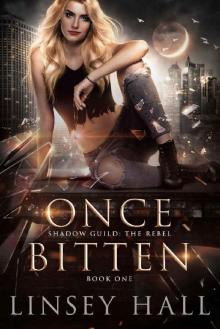 Once Bitten (Shadow Guild: The Rebel)
Once Bitten (Shadow Guild: The Rebel)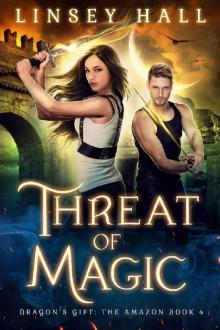 Threat of Magic (Dragon's Gift: The Amazon Book 4)
Threat of Magic (Dragon's Gift: The Amazon Book 4)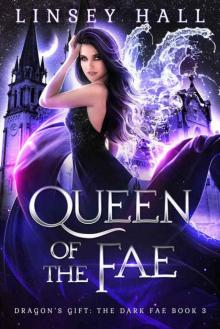 Queen of the Fae
Queen of the Fae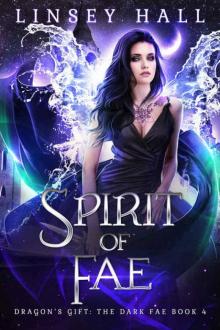 Spirit of the Fae
Spirit of the Fae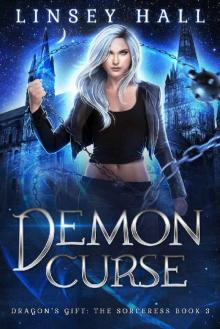 Demon Curse
Demon Curse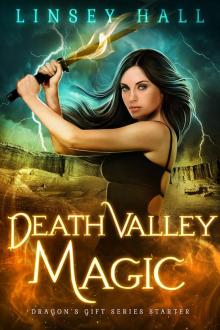 Death Valley Magic: Dragon's Gift Series Starter
Death Valley Magic: Dragon's Gift Series Starter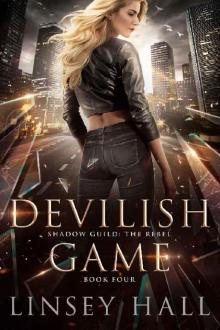 Devilish Game (Shadow Guild: The Rebel Book 4)
Devilish Game (Shadow Guild: The Rebel Book 4)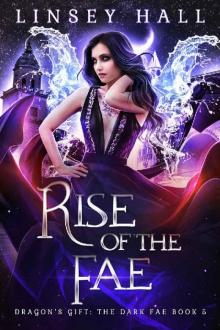 Rise of the Fae (Dragon's Gift
Rise of the Fae (Dragon's Gift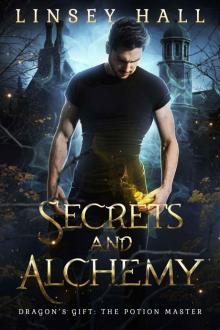 Secrets and Alchemy
Secrets and Alchemy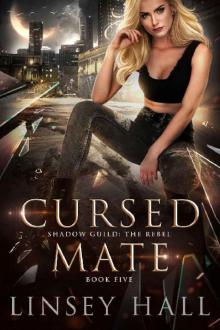 Cursed Mate (Shadow Guild: The Rebel Book 5)
Cursed Mate (Shadow Guild: The Rebel Book 5)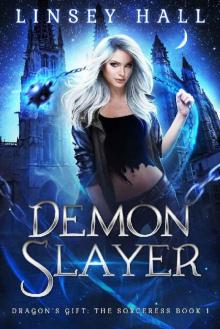 Demon Slayer
Demon Slayer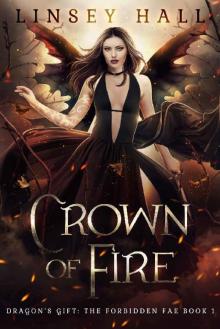 Crown of Fire (The Forbidden Fae Book 1)
Crown of Fire (The Forbidden Fae Book 1)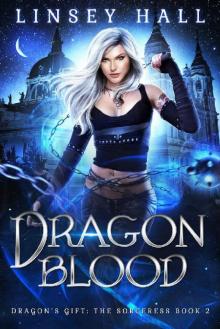 Dragon Blood
Dragon Blood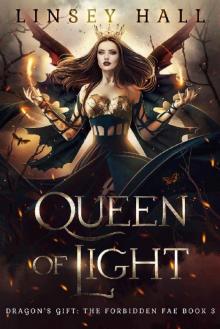 Queen of Light (The Forbidden Fae Book 3)
Queen of Light (The Forbidden Fae Book 3)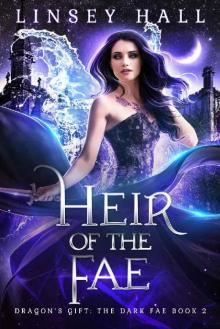 Heir of the Fae
Heir of the Fae Dragon's Gift: The Amazon Complete Series: An Urban Fantasy Boxed Set
Dragon's Gift: The Amazon Complete Series: An Urban Fantasy Boxed Set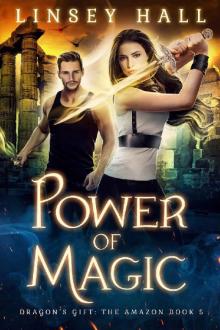 Power of Magic
Power of Magic Dragon's Gift - The Valkyrie- Complete Series
Dragon's Gift - The Valkyrie- Complete Series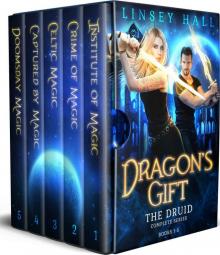 Dragon's Gift - The Druid Complete series Box Set
Dragon's Gift - The Druid Complete series Box Set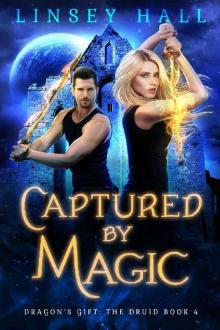 Captured by Magic (Dragon's Gift: The Druid Book 4)
Captured by Magic (Dragon's Gift: The Druid Book 4)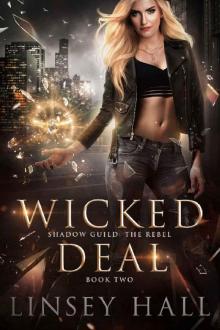 Wicked Deal (Shadow Guild: The Rebel Book 2)
Wicked Deal (Shadow Guild: The Rebel Book 2)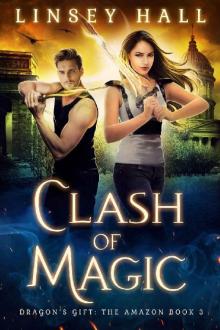 Clash of Magic (Dragon's Gift: The Amazon Book 3)
Clash of Magic (Dragon's Gift: The Amazon Book 3)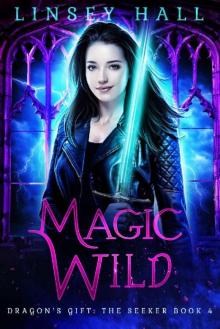 Magic Wild (Dragon's Gift: The Seeker Book 4)
Magic Wild (Dragon's Gift: The Seeker Book 4)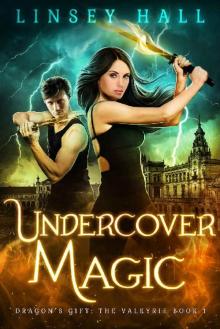 Undercover Magic (Dragon's Gift: The Valkyrie Book 1)
Undercover Magic (Dragon's Gift: The Valkyrie Book 1) Undercover Magic
Undercover Magic Dragon's Gift The Huntress Books 1-3
Dragon's Gift The Huntress Books 1-3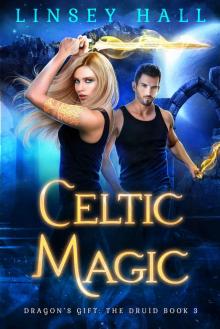 Celtic Magic (Dragon's Gift: The Druid Book 3)
Celtic Magic (Dragon's Gift: The Druid Book 3)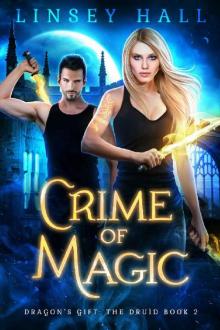 Crime of Magic
Crime of Magic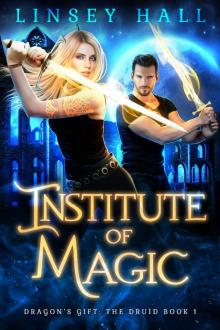 Institute of Magic (Dragon's Gift: The Druid Book 1)
Institute of Magic (Dragon's Gift: The Druid Book 1)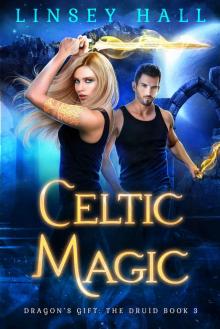 Celtic Magic
Celtic Magic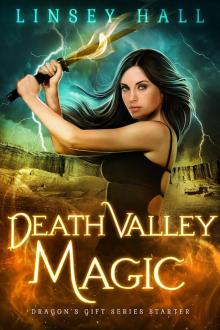 Death Valley Magic
Death Valley Magic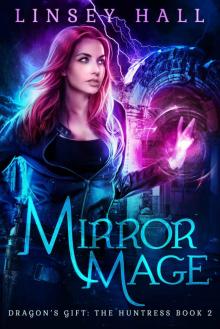 Mirror Mage (Dragon's Gift: The Huntress Book 2)
Mirror Mage (Dragon's Gift: The Huntress Book 2)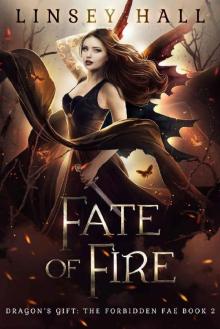 Fate of Fire (The Forbidden Fae Book 2)
Fate of Fire (The Forbidden Fae Book 2)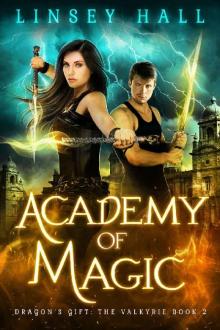 Academy of Magic (Dragon's Gift: The Valkyrie Book 2)
Academy of Magic (Dragon's Gift: The Valkyrie Book 2)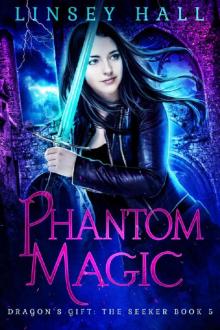 Phantom Magic (Dragon's Gift: The Seeker Book 5)
Phantom Magic (Dragon's Gift: The Seeker Book 5)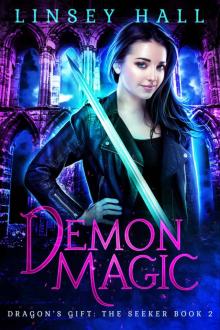 Demon Magic (Dragon's Gift: The Seeker Book 2)
Demon Magic (Dragon's Gift: The Seeker Book 2)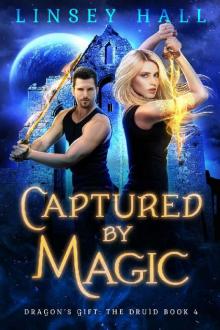 Captured by Magic
Captured by Magic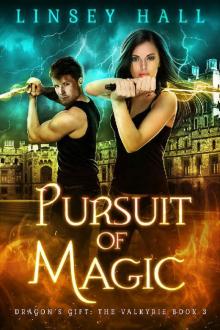 Pursuit of Magic (Dragon's Gift: The Valkyrie Book 3)
Pursuit of Magic (Dragon's Gift: The Valkyrie Book 3)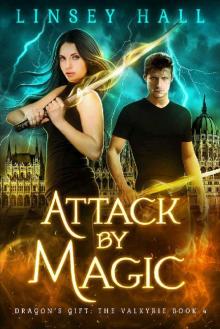 Attack by Magic
Attack by Magic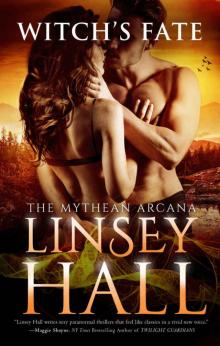 mythean arcana 07 - witchs fate
mythean arcana 07 - witchs fate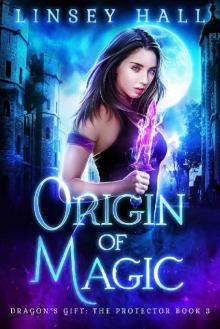 Origin of Magic (Dragon's Gift: The Protector Book 3)
Origin of Magic (Dragon's Gift: The Protector Book 3)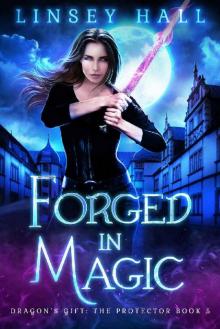 Forged in Magic (Dragon's Gift: The Protector Book 5)
Forged in Magic (Dragon's Gift: The Protector Book 5)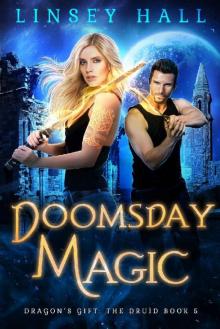 Doomsday Magic
Doomsday Magic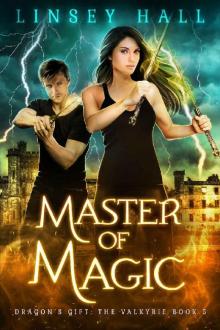 Master of Magic (Dragon's Gift: The Valkyrie Book 5)
Master of Magic (Dragon's Gift: The Valkyrie Book 5)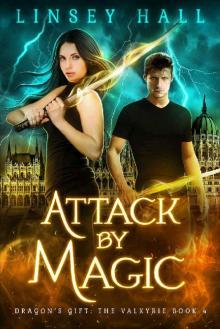 Attack by Magic (Dragon's Gift: The Valkyrie Book 4)
Attack by Magic (Dragon's Gift: The Valkyrie Book 4)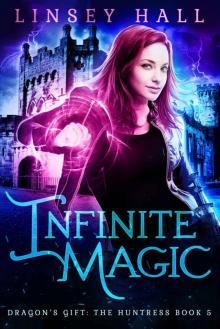 Infinite Magic (Dragon's Gift: The Huntress Book 5)
Infinite Magic (Dragon's Gift: The Huntress Book 5)![[Dragon's Gift 01.0 - 05.0] Complete Series Read online](http://i1.bookreadfree.com/i2/04/05/dragons_gift_01_0_-_05_0_complete_series_preview.jpg) [Dragon's Gift 01.0 - 05.0] Complete Series
[Dragon's Gift 01.0 - 05.0] Complete Series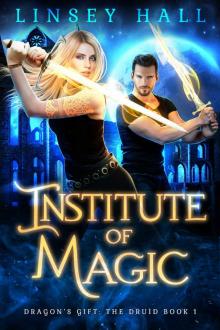 Institute of Magic
Institute of Magic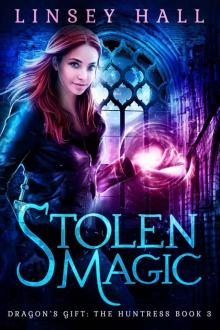 Stolen Magic (Dragon's Gift: The Huntress Book 3)
Stolen Magic (Dragon's Gift: The Huntress Book 3)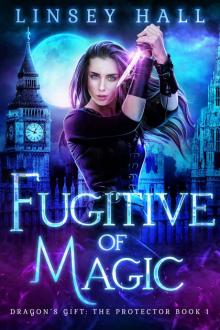 Fugitive of Magic (Dragon's Gift: The Protector Book 1)
Fugitive of Magic (Dragon's Gift: The Protector Book 1)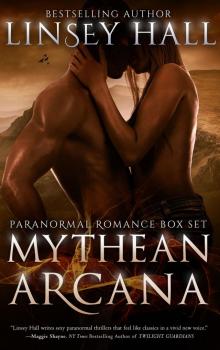 The Mythean Arcana Box Set
The Mythean Arcana Box Set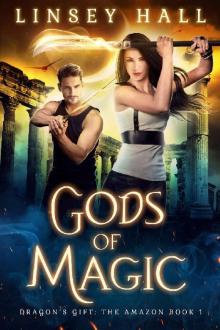 Gods of Magic
Gods of Magic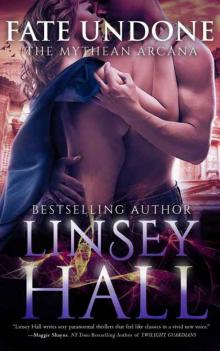 Fate Undone (The Mythean Arcana Series Book 5)
Fate Undone (The Mythean Arcana Series Book 5)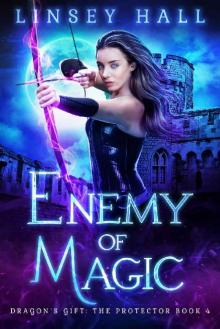 Enemy of Magic (Dragon's Gift: The Protector Book 4)
Enemy of Magic (Dragon's Gift: The Protector Book 4)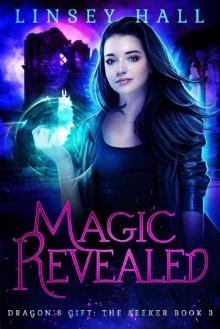 Magic Revealed (Dragon's Gift: The Seeker Book 3)
Magic Revealed (Dragon's Gift: The Seeker Book 3)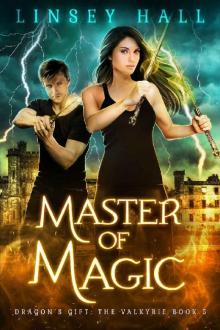 Master of Magic
Master of Magic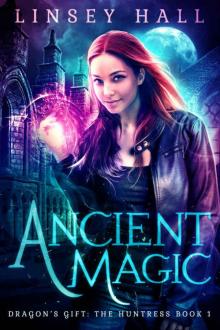 Ancient Magic: a New Adult Urban Fantasy (Dragon's Gift: The Huntress Book 1)
Ancient Magic: a New Adult Urban Fantasy (Dragon's Gift: The Huntress Book 1)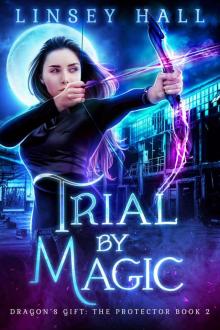 Dragon's Gift: The Protector 02 Trial by Magic
Dragon's Gift: The Protector 02 Trial by Magic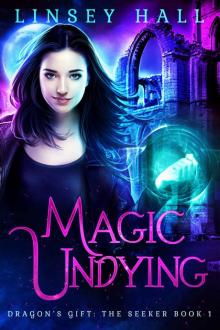 Magic Undying (Dragon's Gift: The Seeker Book 1)
Magic Undying (Dragon's Gift: The Seeker Book 1)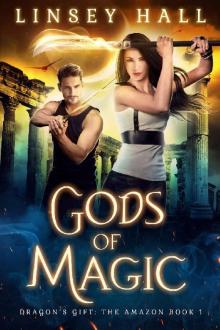 Gods of Magic (Dragon's Gift: The Amazon Book 1)
Gods of Magic (Dragon's Gift: The Amazon Book 1)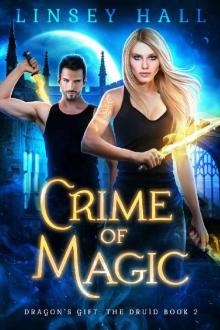 Crime of Magic (Dragon's Gift: The Druid Book 2)
Crime of Magic (Dragon's Gift: The Druid Book 2)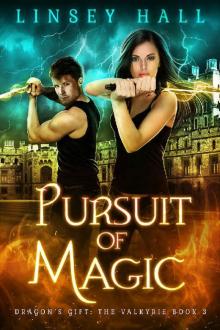 Pursuit of Magic
Pursuit of Magic